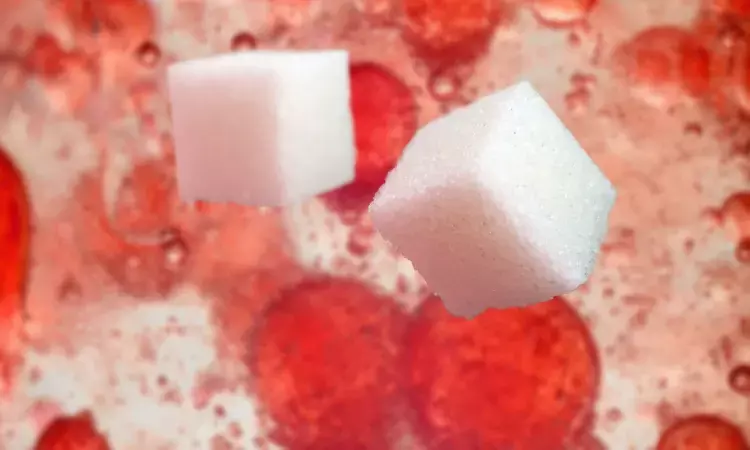- Home
- Medical news & Guidelines
- Anesthesiology
- Cardiology and CTVS
- Critical Care
- Dentistry
- Dermatology
- Diabetes and Endocrinology
- ENT
- Gastroenterology
- Medicine
- Nephrology
- Neurology
- Obstretics-Gynaecology
- Oncology
- Ophthalmology
- Orthopaedics
- Pediatrics-Neonatology
- Psychiatry
- Pulmonology
- Radiology
- Surgery
- Urology
- Laboratory Medicine
- Diet
- Nursing
- Paramedical
- Physiotherapy
- Health news
- Fact Check
- Bone Health Fact Check
- Brain Health Fact Check
- Cancer Related Fact Check
- Child Care Fact Check
- Dental and oral health fact check
- Diabetes and metabolic health fact check
- Diet and Nutrition Fact Check
- Eye and ENT Care Fact Check
- Fitness fact check
- Gut health fact check
- Heart health fact check
- Kidney health fact check
- Medical education fact check
- Men's health fact check
- Respiratory fact check
- Skin and hair care fact check
- Vaccine and Immunization fact check
- Women's health fact check
- AYUSH
- State News
- Andaman and Nicobar Islands
- Andhra Pradesh
- Arunachal Pradesh
- Assam
- Bihar
- Chandigarh
- Chattisgarh
- Dadra and Nagar Haveli
- Daman and Diu
- Delhi
- Goa
- Gujarat
- Haryana
- Himachal Pradesh
- Jammu & Kashmir
- Jharkhand
- Karnataka
- Kerala
- Ladakh
- Lakshadweep
- Madhya Pradesh
- Maharashtra
- Manipur
- Meghalaya
- Mizoram
- Nagaland
- Odisha
- Puducherry
- Punjab
- Rajasthan
- Sikkim
- Tamil Nadu
- Telangana
- Tripura
- Uttar Pradesh
- Uttrakhand
- West Bengal
- Medical Education
- Industry
Porous Colorimetric Microneedles valuable for monitoring blood glucose levels

Researchers have fabricated porous Microneedles or MN sensors for minimally invasive sampling and colorimetric glucose sensing in skin interstitial fluid or ISF. The findings of the study were reported on rats.
These Biocompatible porous MNs can successfully penetrated rat skin. Because of internal pores, it extracted sufficient ISF for analysis relatively in a shorter time. They explained that the enzymes integrated with chromogenic agents on the porous MN sensor led to in situ visual colorimetric detection of glucose.
Using a smartphone, they analysed the colour intensity of the paper-based detection area, which quantified glucose levels. The usage was validated successfully on rat models and skin (varying glucose levels).
The findings are published in Biosensors.
Explaining research background, researchers said that in diabetes, monitoring blood glucose (BG) is indispensable. Frequent finger pricking (fingertip blood collection) causes discomfort. It also increases the risk of infection. Monitoring glucose in skin ISF is a good alternative due to the correlation between ISF glucose levels and blood glucose levels. So in this study, we developed a biocompatible porous microneedle. This was capable of rapid sampling, sensing, and glucose analysis in ISF in a minimally invasive manner. It can also improve patient compliance and detection efficiency.
The study results are:
- The microneedles contain glucose oxidase (GOx) and horseradish peroxidase (HRP).
- A colorimetric sensing layer containing 3,3′,5,5′-tetramethylbenzidine (TMB) was present on the back of the microneedles.
- Following penetration of rat skin, porous microneedles harvested ISF rapidly and smoothly via capillary action, triggering the production of hydrogen peroxide (H2O2) from glucose.
- In the presence of H2O2, HRP reacted with TMB contained in the filter paper on the back of microneedles.
- A visible Color shift was observed.
Further, a smartphone analysis of the images quickly quantifies glucose levels in the 50–400 mg/dL range using the correlation between colour intensity and glucose concentration.
The developed microneedle-based sensing technique with minimally invasive sampling will greatly affect point-of-care clinical diagnosis and diabetic health management.
They said the device is easily portable. Only finger pressure is used for obtaining glucose levels.
Fabricating an integrated, minimally invasive sampling and sensing platform can detect other biomarkers in ISF, enhancing patient compliance and detection.
Further reading:
Zeng, Q.; Xu, M.; Hu, W.; Cao, W.; Zhan, Y.; Zhang, Y.; Wang, Q.; Ma, T. Porous Colorimetric Microneedles for Minimally Invasive Rapid Glucose Sampling and Sensing in Skin Interstitial Fluid. Biosensors 2023, 13, 537. https://doi.org/10.3390/bios13050537
BDS, MDS in Periodontics and Implantology
Dr. Aditi Yadav is a BDS, MDS in Periodontics and Implantology. She has a clinical experience of 5 years as a laser dental surgeon. She also has a Diploma in clinical research and pharmacovigilance and is a Certified data scientist. She is currently working as a content developer in e-health services. Dr. Yadav has a keen interest in Medical Journalism and is actively involved in Medical Research writing.
Dr Kamal Kant Kohli-MBBS, DTCD- a chest specialist with more than 30 years of practice and a flair for writing clinical articles, Dr Kamal Kant Kohli joined Medical Dialogues as a Chief Editor of Medical News. Besides writing articles, as an editor, he proofreads and verifies all the medical content published on Medical Dialogues including those coming from journals, studies,medical conferences,guidelines etc. Email: drkohli@medicaldialogues.in. Contact no. 011-43720751


